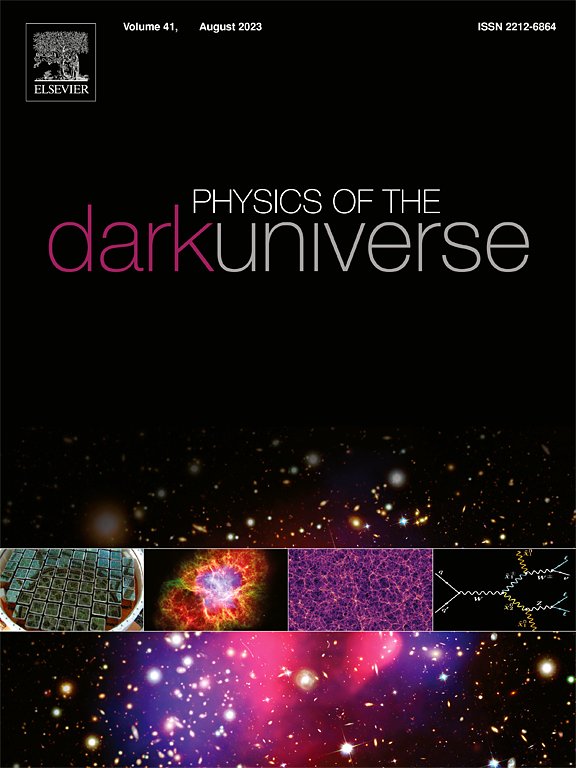On a model of variable curvature that mimics the observed Universe acceleration
IF 5
2区 物理与天体物理
Q1 ASTRONOMY & ASTROPHYSICS
引用次数: 0
Abstract
We present a new model based on General Relativity in where a subtle change of curvature at late times is able to produce the observed Universe acceleration and an oscillating behavior in the effective equation of state. This model aims to test the cosmological principle, by introducing a slight modification in the traditional FLRW metric, through a non-constant curvature parameter. This model is defined by a smooth step-like function with a slight transition between two curvature values, fulfilling the premise that the derivative of this curvature parameter is preserved as approximately zero, . To test our model, we implemented a MCMC likelihood analysis using Cosmic Chronometers and Type Ia supernovae data in order to constrain the free parameters of the model and reconstruct , , , also comparing the results with the CDM model. The main result is that this model provides an alternative to the acceleration of the Universe without the need of a dark energy component. In particular, it gives an equivalent phase transition at , while obtaining the same fraction of matter density, similar to what is expected for the standard CDM model. Remarkably, it also predicts a slight decelerated state at in agreement with diverse Dark Energy parameterizations. We conclude that the behavior of our proposed model points towards a new and intriguing way to investigate slight violations to the cosmological principle, in particular the case of inhomogenities during low phase transitions.
求助全文
约1分钟内获得全文
求助全文
来源期刊

Physics of the Dark Universe
ASTRONOMY & ASTROPHYSICS-
CiteScore
9.60
自引率
7.30%
发文量
118
审稿时长
61 days
期刊介绍:
Physics of the Dark Universe is an innovative online-only journal that offers rapid publication of peer-reviewed, original research articles considered of high scientific impact.
The journal is focused on the understanding of Dark Matter, Dark Energy, Early Universe, gravitational waves and neutrinos, covering all theoretical, experimental and phenomenological aspects.
 求助内容:
求助内容: 应助结果提醒方式:
应助结果提醒方式:


